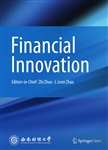Regulatory constraint and small business lending:do innovative peer-to-peer lenders have an advantage?
作者机构:Accounting and Finance DepartmentStrathclyde Business SchoolUniversity of Strathclyde199 Cathedral StreetGlasgow G40QUScotlandUK Kütahya DumlupınarÜniversitesiEvliyaÇelebi Yerleşkesi TavşanlıYolu 10.kmKütahyaTürkiye Department of AccountingFinance and EconomicsUlster Business SchoolJordanstown campusShore RoadBelfast BT370QBUK
出 版 物:《Financial Innovation》 (金融创新(英文))
年 卷 期:2022年第8卷第1期
页 面:1988-2012页
核心收录:
学科分类:02[经济学] 0202[经济学-应用经济学] 1202[管理学-工商管理] 020201[经济学-国民经济学] 0701[理学-数学]
基 金:Ministry of National Education of Türkiye
主 题:Small business Dodd-Frank FinTech Innovative lending models
摘 要:This paper investigates whether innovative Peer-to-Peer lending by FinTechs’has a regulatory advantage over the big banks in respect of small business *** do this through the lens of the regulations imposed by the Dodd-Frank Act,using a difference-in-difference *** Act tightened traditional bank credit standards on business loans,especially for small ***,the new FinTech lenders were not subject to the same regulatory *** find that traditional banks significantly reduced their lending to small businesses,as compared to their FinTech *** results suggest that while the Dodd-Frank Act constrained lending to small businesses,innovative new lending models gained a regulatory advantage and the Peer-to-Peer lenders capitalized on this.



